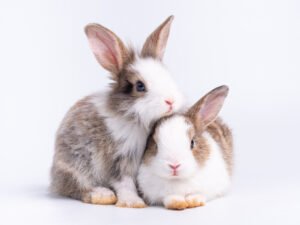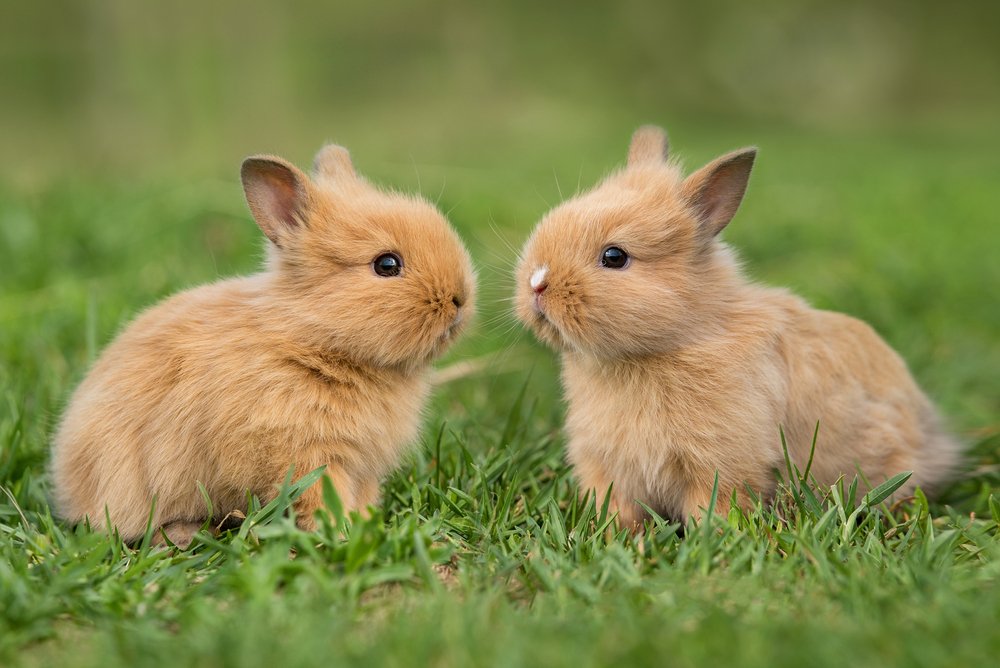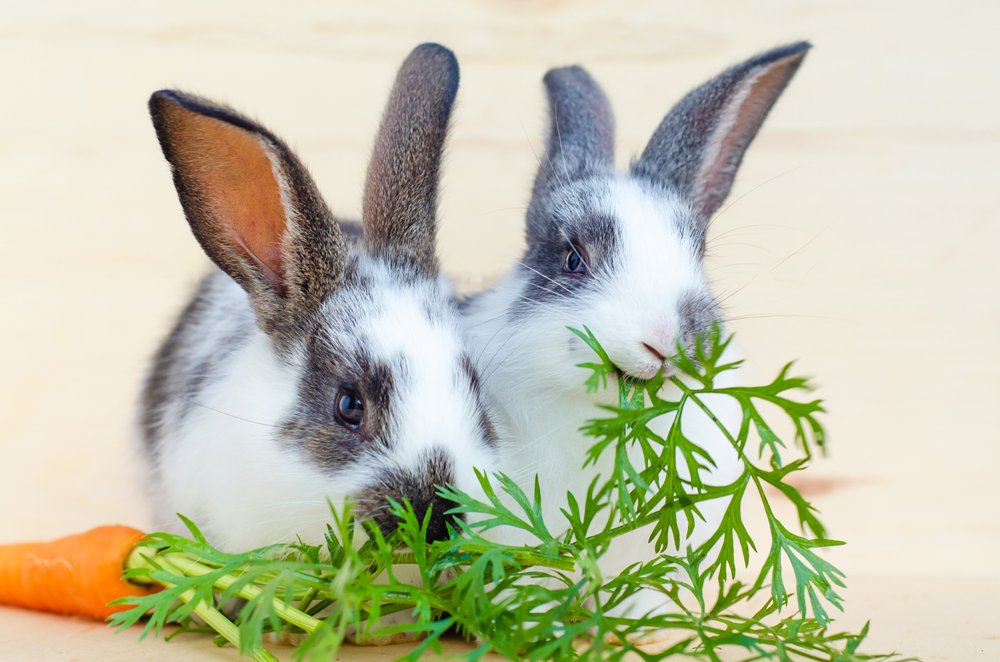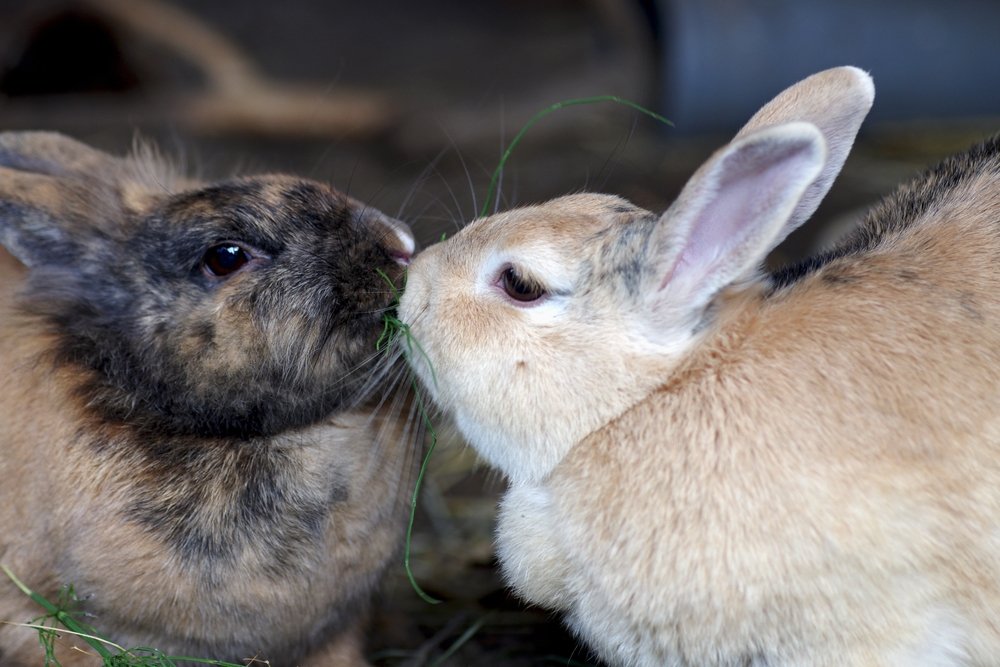The Ultimate Guide to Keeping Female Rabbits Together:
Tips, Tricks, and Expert Insights
As a rabbit enthusiast, I have always been fascinated by the idea of keeping female rabbits together. After all, these adorable creatures are known for their love of companionship and social interaction. Over the years, I have researched and experimented with various techniques to successfully bond my bunnies to each other.
I am thrilled to share my findings with fellow rabbit lovers. In this ultimate guide, we will delve into rabbit bonding behavior, explore the steps and techniques on how to bond rabbits, and discuss common challenges and solutions to maintain a harmonious rabbit environment. So, let’s hop right into it!
Understanding Rabbit Bonding Behavior
 Before we start discussing how to keep female rabbits together, it is crucial to understand rabbit bonding behavior. Rabbits are highly sociable animals and thrive in the company of others. In the wild, rabbits live in complex social structures called warrens, where they form strong bonds with their family members. These bonds are essential for their survival, as they provide emotional support, protection, and help in raising their young.
Before we start discussing how to keep female rabbits together, it is crucial to understand rabbit bonding behavior. Rabbits are highly sociable animals and thrive in the company of others. In the wild, rabbits live in complex social structures called warrens, where they form strong bonds with their family members. These bonds are essential for their survival, as they provide emotional support, protection, and help in raising their young.
When it comes to domestic rabbits, bonding is equally important. A bonded pair or group of rabbits will groom each other, snuggle together for warmth and comfort, and engage in playful activities.
However, it is essential to remember that rabbits are territorial animals, and introducing new rabbits can be challenging. To bond rabbits successfully, following a step-by-step approach and being patient is essential, as the bonding process can take anywhere from a few days to several months. For best results, these steps to keep female rabbits together.
How to Bond Rabbits: Steps and Techniques
Now that we have a better understanding of rabbit bonding behavior let’s discuss the steps and techniques on how to bond rabbits. The key to successful bonding lies in the gradual introduction and close monitoring of their interactions.
-
Preparation:
Before introducing your rabbits, ensure both are spayed or neutered to prevent hormonal behaviors and territorial aggression. Also, provide each rabbit with its own living space with food, water, and hiding spots.
-
Neutral Territory:
You can choose a neutral area where neither rabbit has established territory. This could be a bathroom, hallway, or a fenced-off area in your living room. The neutral space should be large enough for the rabbits to move around but small enough to encourage interaction.
-
First Introduction:
Place both rabbits in a neutral area and closely monitor their interactions. Look for signs of aggression, such as lunging, biting, or chasing. If you notice any aggressive behavior, separate the rabbits immediately and try again later. If the rabbits are curious and explore each other without aggression, allow them to interact briefly before returning them to their separate living spaces.
-
Gradual Increase in Time:
Slowly increase the duration of the bonding sessions, allowing the rabbits to spend more time together each day. Continue to monitor their interactions closely and intervene if necessary. Part of the success in keeping female rabbits together comes from allowing them time to form a close bond. Patience is key.
-
Overnight Stays:
Once the rabbits are comfortable in each other’s presence and show signs of bonding, such as grooming and snuggling, allow them to spend the night together in the neutral territory. Continue to monitor their behavior and separate them if any issues arise.
-
Permanent Cohabitation:
After several successful overnight stays, move the rabbits to their permanent living space. Ensure that the environment is thoroughly cleaned and rearranged to prevent territorial disputes.

Bunny Bonding Tips for Successful Cohabitation
To maximize the chances of successful cohabitation, here are some bunny bonding tips to keep in mind:
-
Patience is Key:
Bonding rabbits can be time-consuming, and it is vital to remain patient and persistent. Take your time with the process, and give the rabbits ample time to adjust to each other’s presence.
-
Monitor Body Language:
Pay close attention to the rabbits’ body language during bonding sessions. Positive signs include grooming, snuggling, and lying beside each other. Signs of aggression include lunging, biting, and chasing.
-
Use Stress Bonding:
Stress bonding is a technique that involves placing the rabbits in a mildly stressful situation, such as a car ride or a slippery surface. This can encourage the rabbits to seek comfort in each other and form a bond more quickly.
-
Avoid Favoritism:
It is important not to show favoritism towards one rabbit during the bonding process, as this can create tension and jealousy. Treat both rabbits equally, and offer praise and treats to both.
-
Seek Professional Help:
If you struggle to bond with your rabbits or are concerned about their behavior, consult a professional rabbit behaviorist or veterinarian for guidance.

Common Challenges in Bonding Female Rabbits
Bonding female rabbits can present some unique challenges, as they tend to be more territorial and dominant than their male counterparts. Some common issues that may arise during the bonding process include:
-
Territorial Aggression:
Female rabbits may become aggressive when introduced to a new environment or another rabbit. To minimize territorial aggression, raise the rabbits in a neutral area and rearrange their living space to remove any established territory.
-
Dominance Disputes:
Female rabbits may engage in dominance disputes involving mounting, chasing, or nipping. To address this behavior, allow the rabbits to establish a hierarchy but intervene if the behavior becomes aggressive or harmful.
-
Hormonal Behaviors:
If your rabbits have not been spayed, they may display hormonal behaviors, such as spraying urine, mounting, or aggressive grooming. To prevent these behaviors, please ensure both rabbits are spayed or neutered before bonding.
Video Credit: @VictoriaRaechel
How to Address Rabbit Chasing and Fighting
Chasing and fighting are common behaviors that may occur during the bonding process. To address these behaviors, follow these steps:
-
Intervene Promptly:
If you notice chasing or fighting, intervene immediately to prevent injury. You can use a spray bottle filled with water, a towel, or a loud noise to separate the rabbits.
-
Identify Triggers:
Observe the rabbits closely to identify any chasing or fighting behavior triggers. This might include food, toys, or specific areas in their environment.
-
Address the Triggers:
Once you have identified the triggers, take steps to address them. This could involve providing multiple food dishes, removing toys that cause disputes, or rearranging the environment to reduce territorial behavior.
-
Increase Bonding Time:
Gradually increase the duration of the bonding sessions, allowing the rabbits to spend more time together and become more comfortable in each other’s presence.
-
Consult a Professional:
If the chasing or fighting behavior persists, seek professional help from a rabbit behaviorist or your veterinarian.

Introducing Two Female Rabbits: Best Practices
Following best practices to ensure a successful bond is important when introducing two female rabbits. Here are some tips to keep in mind:
-
Spay or Neuter:
Please ensure both rabbits are spayed or neutered to prevent hormonal behaviors and territorial aggression. Oxbow animal health explains the importance of this type of surgery.
-
Provide Separate Living Spaces:
Provide each rabbit with its own living space, complete with food, water, and hiding spots, before beginning the bonding process.
-
Introduce in Neutral Territory:
Introduce the rabbits in a neutral area where neither rabbit has established territory.
-
Monitor Interactions Closely:
Closely monitor the rabbits’ interactions during bonding sessions, and intervene if necessary.
-
Gradually Increase Bonding Time:
Slowly increase the duration of the bonding sessions, allowing the rabbits to spend more time together each day.
-
Seek Professional Help if Needed:
You can consult a professional rabbit behaviorist or your veterinarian for guidance if you encounter any challenges during the bonding process.
Expert Insights on Rabbit Bonding, Cohabitation, Keeping Two Rabbits Together
I have consulted various experts in rabbit behavior and cohabitation throughout my journey of bonding rabbits. Their valuable insights have helped me understand the intricacies of rabbit bonding and develop effective techniques for successful cohabitation. Some key expert insights include:
-
Every Rabbit Is Unique:
It is important to remember that every rabbit has its own unique personality and preferences. What works for one pair of rabbits might not work for another, so it is crucial to be patient and adapt your approach as needed.
-
The Importance of Patience:
Bonding rabbits can be lengthy; remaining patient and persistent is essential. Take your time with the process; give the rabbits ample time to adjust to each other’s presence.
Also, make sure that you don’t show any concern or agitation. Rabbits, like many other animals, read people’s emotions quite readily. If you are afraid they might fight, they will sense your fear. Calm and peaceful introductions are necessary.
-
The Value of Professional Guidance:
If you are struggling to bond your rabbits or are concerned about their behavior, don’t hesitate to seek professional help from a rabbit behaviorist or your veterinarian.
Maintaining a Harmonious Rabbit Environment
Once your rabbits are bonded and living together, it is important to maintain a harmonious environment to ensure their continued happiness and well-being. Here are some tips to help you maintain a peaceful rabbit household:
-
Keep the Environment Clean:
Regularly clean and sanitize the rabbits’ living space to prevent the buildup of bacteria and odors.
Rabbits are clean animals that are easily stressed. And a dirty pen or stale water provides stress. Keep it clean for happiness.
-
Provide Ample Resources:
Please make sure that your rabbits have access to plenty of food, water, and hiding spots to prevent competition and disputes. When bonding two rabbits, it helps to provide three or more of everything. That’s three food dishes, three water dishes, and possibly three litter boxes.
Why three for two rabbits? Sometimes a dominant rabbit will go from one dish to the other. Having a third ensures the other rabbit has all she needs, too.
-
Offer Mental and Physical Stimulation:
Provide your rabbits with toys and activities to stimulate them mentally and physically such as puzzle toys, digging boxes, and tunnels.
-
Monitor Behavior:
Keep a close eye on your rabbits’ behavior, and address any issues that may arise, such as aggression, territorial disputes, or illness.
-
Regular Veterinary Check-Ups:
Schedule regular veterinary check-ups to ensure your rabbits are in good health and address any health issues promptly.
The Joys of a Bonded Rabbit Household
The journey to keep female rabbits together can be both challenging and rewarding. By understanding rabbit bonding behavior, following a step-by-step approach, and being patient and persistent, you can successfully bond your rabbits and enjoy the joy of a bonded rabbit household.
Remember that every rabbit is unique; what works for one pair may not work for another. Seek professional guidance if needed, and don’t hesitate to adapt your approach.
The benefits of keeping female rabbits together include companionship, emotional support, and increased physical activity. Maintaining a harmonious rabbit environment ensures your rabbits lead happy and healthy lives together.
So, whether you are a seasoned rabbit owner or a new enthusiast, I hope this guide has provided you with valuable insights and techniques for keeping female rabbits together. With patience, persistence, and love, you can create a happy and harmonious rabbit household that will bring joy to your life for years to come.
Are you struggling to bond your rabbits or maintain a harmonious rabbit household? Consult your veterinarian for guidance. With their help and the tips and techniques outlined in this guide, you can create a happy and healthy home for your beloved rabbits.

FAQs
Will this work for two male rabbits?
It can. First, make sure the male rabbits are neutered. It’s best if this is done before they reach sexual maturity. Then proceed as described above.
It’s interesting to note that neutered male rabbits often form closer bonded pairs than some female pairs. The best results occur when the males are neutered before reaching sexual maturity.
What if I have male and female rabbits. Will they bond together?
First, please make sure the female is spayed and the male neutered. You don’t want to deal with litters of babies. However, we have had excellent success with bonding female rabbits with male rabbits in this situation.
My bonded rabbits fighting is causing injuries. What should I do?
If the spray bottle is not deterring the fighting rabbits, separate them. Give them time to settle down, probably at least a few days. Then try again, slowly. It is possible that your rabbits fighting will continue.
They may always need to have separate homes. This is often the result of incompatible bunnies. Perhaps both are dominant rabbit personalities. Occasionally, when one rabbit is raised past sexual maturity, they bond with their owner and don’t want another rabbit around.
One of my bunnies is a submissive rabbit. My other rabbit is a dominate bunny. Can they bond?
Yes, as long as the dominant bunny does not bully the submissive rabbit. This arrangement is sometimes easier than with other rabbits where both are dominant.
Will bonded rabbits share the same litter box? Or do I need two litter boxes?
That depends on the rabbits. Closely bonded rabbits often share their food dish, hay, water, and litter box. They often sleep snuggled up together, too. But some rabbit pairs never quite get used to sharing everything. Even bonded rabbits may show a sense of personal space. In that case, provide two or more litter boxes to keep your bunnies clean and happy.
My bonded rabbits had a serious fight and one tore off some of the other's fur. Will they bond eventually?
Maybe. Separate them for a few days, then try again. While they are separated, try to determine why the fight occurs. Make sure that the fur is all that’s missing. If the rabbit has any breaks in the skin, keep that area clean until it heals. Serious injuries may require your veterinarian’s attention.
Do the rabbits have to be the same breed?
No, they can each be of whichever breed or mixed breeds. They might even be different sizes. Just note that some breeds are more active and might disturb a quieter breed. And if your larger rabbit is the dominant bunny, she can cause more injury. Let common sense prevail.


